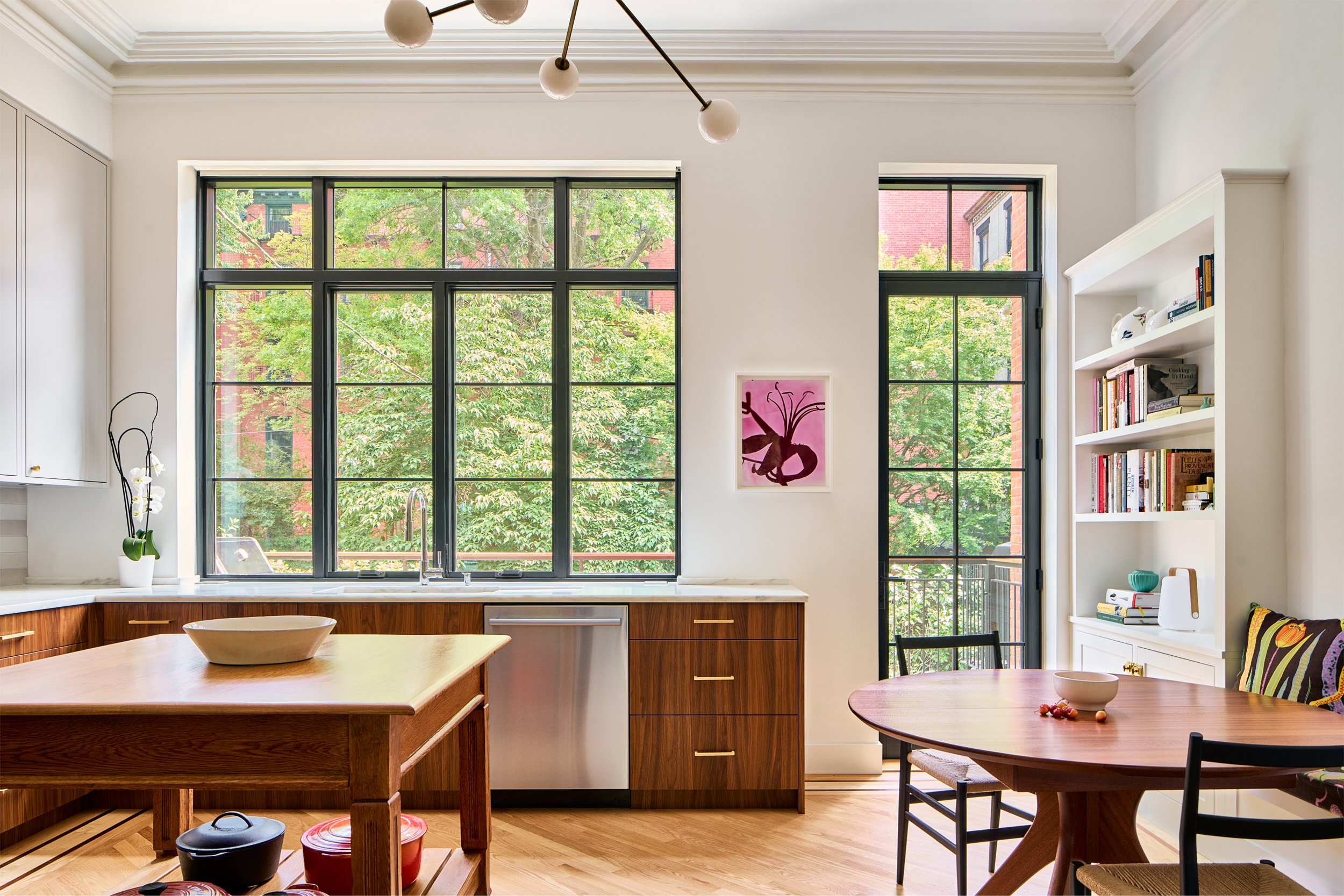Building of the Day: 58 Joralemon Street
Brooklyn, one building at a time. Name: Row house Address: 58 Joralemon Street Cross Streets: Hicks Street and Willow Place Neighborhood: Brooklyn Heights Year Built: 1847 Architectural Style: Greek Revival Architect: Unknown Landmarked: Yes, part of Brooklyn Heights HD (1965) The story: The neighborhood of Willowtown, part of Brooklyn Heights, was once part of the…

Photograph: BLDGBLOG.com
Brooklyn, one building at a time.
Name: Row house
Address: 58 Joralemon Street
Cross Streets: Hicks Street and Willow Place
Neighborhood: Brooklyn Heights
Year Built: 1847
Architectural Style: Greek Revival
Architect: Unknown
Landmarked: Yes, part of Brooklyn Heights HD (1965)
The story: The neighborhood of Willowtown, part of Brooklyn Heights, was once part of the 40 acre estate of Philip Livingston, one of the signers of the Declaration of Independence. After the Revolutionary War, in 1804, Teunis Joralemon, a prominent local judge, bought a piece of the Livingston estate, and the borderline between the two properties became a winding lane, which eventually became Joralemon Street. By the 1840s, Willowtown was a thriving little community, with rows of simple, but elegant brick and brownstone Greek Revival row houses on its blocks, including this end of Joralemon Street.
As the 19th century progressed, the entirety of Brooklyn Heights grew out from the banks overlooking the docks, rows of houses replaced large estates, and Brooklyn went from a series of villages and towns to a large, important and ever-growing city. With all of the other changes to the city came the innovations and wonders of mass transit. The 20th century saw the subway system evolve from elevated and surface trains to the underground lines that carry millions around the city today.
Any engineer will tell you that you can’t build tunnels underground, fill them with people, as well as the trains and stations that exist down there, without sufficient ventilation. There are many places throughout the system where ventilation facilities allow fresh air to circulate, where old air is pushed out, and fresh air sucked in, like the breathing of a vast subterranean dragon. But nowhere but in Brooklyn Heights was such an innovative way found to incorporate this necessary function into the streetscape of the city.
The house was built as a single family home, perhaps for a merchant, like many on the block. But by 1897, the home, like most of its neighbors, had been turned into a multi-family dwelling, that year housing a gardener, a glassworker, and a “weigher.” Willowtown had become working class, not gentry, only a few blocks away. By 1908, the Interborough Rapid Transit trains, what are now the 4 and the 5 lines, were rumbling beneath here, connecting the Heights to Lower Manhattan. The early subway engineers, who really were geniuses, figured out that this was the optimal place for a ventilation shaft. The house was purchased, gutted, and became the “world’s only Greek Revival subway ventilator” 105 years ago.
It certainly would have been easier to tear down the house in order to build this shaft. Sorry to say, if it had been built much later than 1908, they probably would have torn down half the block, especially if Robert Moses had been in charge. But these engineers did not, they tunneled from below. Beyond the front doors are walls covered with electric panels and switches, and a huge series of catwalks and stairs that lead nine stories below to the subway tracks. In addition to being ventilation, the house is an emergency exit from the tunnel that leaves Brooklyn and travels under the river to the Bowling Green station.
In its early years, the windows of the house were fitted with louvers which opened and shut. Neighbors told of clouds of smoke that would pour out of the house. This louvered system was in place until 1999, when the MTA replaced the old 1950s generators and fans. The city removed the louvers, and installed permanently shut Lexan windows. Today, the tunnel air is recirculated through a system built on the roof, and no longer vents to the street. Working with the LPC, the house was repainted, a more period front door and lockset was installed, and the Lexan windows were mullioned to look like the original house windows. Neighbors have even placed flowerboxes in the window sills.
The house is one of the worst kept “secrets” of the transit system. It’s been written up and blogged about many times, yet is still the object of speculation to those wandering around Willowtown. Could this be one of those rare birds, an unrenovated and empty house in Brooklyn Heights? Is it for sale? I’m afraid not. GMAP
(Photograph: BLDGBLOG.com)







What's Your Take? Leave a Comment